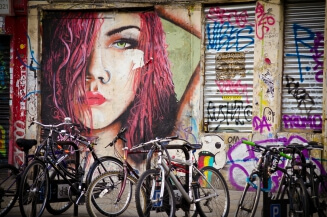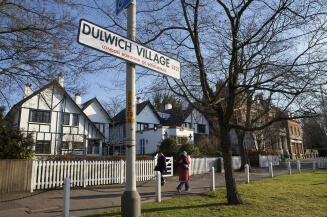MLE, race and class

In any discussion of MLE and race, we mustn’t forget that the African Caribbeans, and other minority ethnic people, suffered a huge amount of discrimination in the early days. Racial discrimination is still faced by BME people today, and this is part of the reason for their not being able to climb the social class ladder as easily as White British people. In London, this has had the effect that people with a BME background are more likely to be working class than non-BME people.
This demonstrates that there is a strong link between ethnicity and class. It’s true across the country that working-class people are more likely to speak with a local accent than middle-class people. In London, the same applies; the difference is that a higher proportion of working-class people have BME backgrounds than do middle-class people, and so speak MLE, which along with Cockney is one of the local accents.
The link between race and class in London is insightfully discussed in Akala’s Race and Class in the Ruins of Empire, as well as in the interview I’ve included a link to later in this article. He does not mention language, but on page 102 refers to himself as ‘the typical black yout from the ends’, using MLE slang.
So do middle-class people speak MLE?

Yes, young people brought up well away from the MLE ‘heartlands’ pick up features from MLE. Mainly this is restricted to slang. This is nicely illustrated by journalist Nick Harding in the Daily Mail (11 October 2013):
“With her ear glued to her mobile phone, my 11-year-old daughter, Millie, was deep in conversation, her brow furrowed as she discussed some arrangement with a friend.
I listened in, as I made jam in the kitchen. ‘Lol, that’s well sick!’ Millie said. ‘DW, yolo!’
This indecipherable code-speak was delivered in an accent I could only place as somewhere between South London, downtown Los Angeles and Kingston, Jamaica.
It certainly isn’t indigenous to our home village of Ashtead, in the rolling Surrey hills.
When Millie ended the call, she turned to me, smiled and asked: ‘What’s for supper please, Dad?’ in perfect Received Pronunciation.
It seems that after less than a month at secondary school, my daughter is now bi-lingual — but it is not French or German in which she is suddenly fluent.
Millie now speaks a version of what academics call ‘Multicultural Youth English’, or MYE, which she has picked up from her friends — middle-class girls from the Home Counties.”
Millie has picked up yo, well sick, DW (‘don’t worry’) and Yolo (‘you only live once’). But you might have noticed that these aren’t really MLE at all, but text-speak (DW, yolo) or general slang (well sick), with the exception of yo. More and more, you can hear expressions like whagwan (‘What’s up?’ ‘How’s things’?) and even man meaning ‘I’, both of which are definitely MLE. (Note how the journalist gets the name of MLE wrong!)
All of these words come to middle-class and other non-MLE speakers via the media, especially social media and music. They don’t usually come directly from people who speak MLE. Words, especially slang, are easy to pick up, and give a flavour of coolness and urbanness without too much effort. It’s much harder to pick up authentic MLE pronunciations - that requires a sharp ear and a lot of training!
